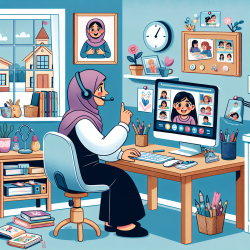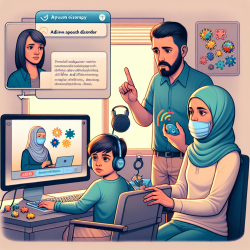In the ever-evolving landscape of education, it's crucial to focus on the holistic development of students, especially those who are neurodiverse. The research article, "Taking Students on a Strengths Safari: A Multidimensional Pilot Study of School-Based Wellbeing for Young Neurodiverse Children," offers valuable insights into enhancing school-based wellbeing (SBWB) for young neurodiverse students. This blog will distill key findings and provide practical tips for practitioners to improve their skills by implementing the outcomes of this research.
The Dual-Factor Model of Mental Health
The dual-factor model of mental health integrates both subjective wellbeing (SWB) and the absence of psychopathology (PTH). This model suggests that mental health is not just the absence of mental illness but also the presence of positive psychological traits. For neurodiverse students, this means focusing on strengths rather than just addressing deficits.
Key Findings from the Study
The study utilized a quasi-experimental design to investigate the effects of the Student Strengths Safari intervention on:
- Students’ self-reported covitality
- Teacher-rated executive functioning
The intervention group showed significant improvements in executive functioning and a promising increase in covitality, although the latter was not statistically significant.
Practical Tips for Practitioners
1. Implement Strength-Based Interventions
The research highlights the importance of focusing on students' strengths. Practitioners can incorporate activities that build on existing strengths, such as:
- Gratitude journaling
- Positive reframing to foster a growth mindset
- Self-talk strategies to overcome barriers
- Mindfulness exercises
2. Use Multidimensional Assessments
The study utilized the SEHS-P and BRIEF-2 to measure covitality and executive functioning. Practitioners should consider adopting similar tools to gain a comprehensive understanding of a student's wellbeing.
3. Collaborate with Teachers
Teachers played a crucial role in the intervention by adapting activities and linking them to academic lessons. Regular communication with teachers can help tailor interventions to meet the specific needs of each student.
4. Monitor Progress
Continuous assessment is vital. The SEHS-P and BRIEF-2 can be used for regular progress monitoring to adapt interventions as needed.
Encouraging Further Research
While this study provides a strong foundation, more research is needed to validate these findings across diverse settings and larger sample sizes. Practitioners are encouraged to participate in or initiate further studies to continue improving educational strategies for neurodiverse students.To read the original research paper, please follow this link:
Taking Students on a Strengths Safari: A Multidimensional Pilot Study of School-Based Wellbeing for Young Neurodiverse Children.










